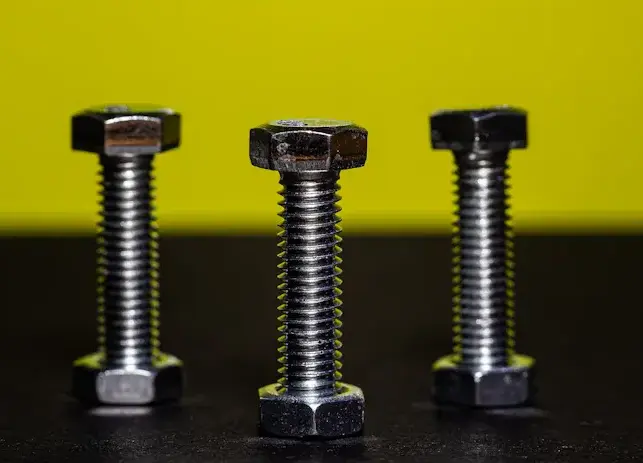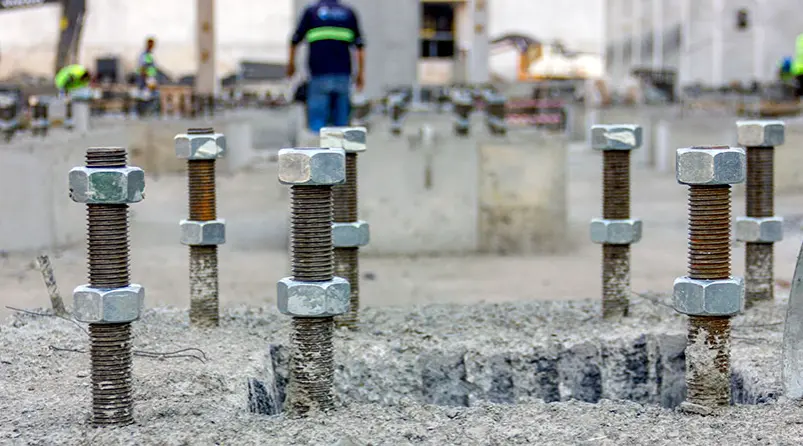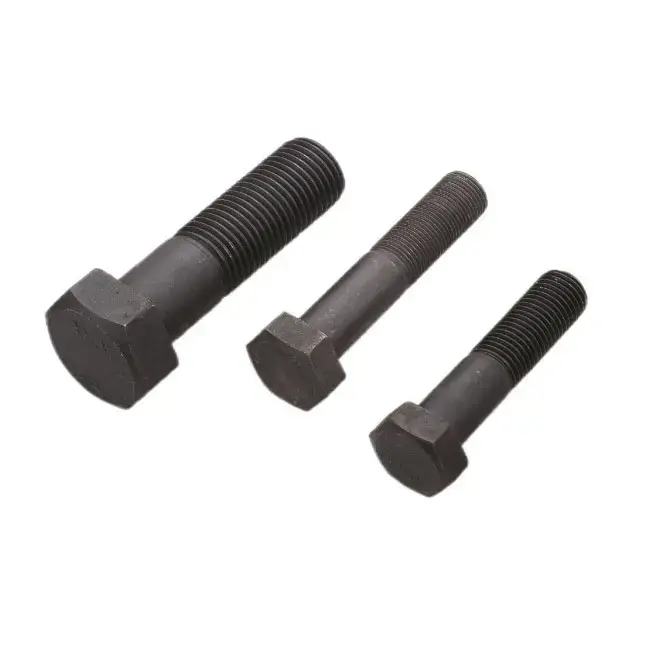What Is a U Bolt? Everything You Need to Know About U-Bolts
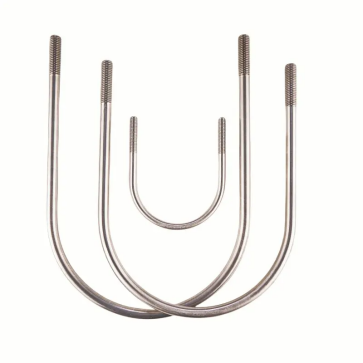
A U Bolt is a fastening component shaped like the letter "U." You can use it to secure pipes, cables, or other cylindrical objects. Its unique design makes it suitable for various tasks. From automotive to marine industries, its versatility ensures it meets the demands of different applications effectively.
Key Takeaways
· A U Bolt looks like a 'U' and holds pipes, wires, or round objects. It keeps them steady and stops them from moving.
· Pick the correct U Bolt by checking its size, shape, and material. For outside use, choose Stainless Steel or coated steel to stop rust.
· Install it correctly to make sure it fits tightly. Add washers and don’t tighten too much to avoid breaking or bending.
Definition and Design of U Bolt
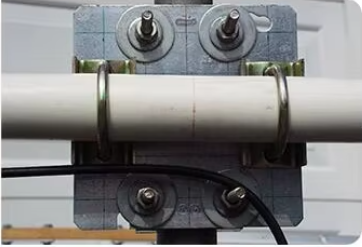
Structure and Features
A U Bolt gets its name from its distinctive "U" shape. You’ll notice it has two threaded ends that allow you to secure objects tightly using nuts. The curved section of the bolt is designed to wrap around pipes, rods, or cylindrical items, providing a snug fit. This design ensures stability and prevents movement or displacement.
U Bolts come in various sizes to accommodate different applications. Some feature rounded curves, while others have squared-off bends for specific uses. The threads on the ends are typically standardized, making it easier for you topair them with compatible nuts.
Tip: When choosing a U Bolt, always check the dimensions of the curve and threads to ensure it fits your application perfectly.
Types of U Bolts
You’ll find several types of U Bolts tailored to different needs. Here are the most common ones:
· Round U Bolts: These are ideal for securing pipes and tubes. Their curved design matches the shape of cylindrical objects.
· Square U Bolts: These work best for rectangular or flat surfaces, such as beams or frames.
· Custom U Bolts: Some manufacturers offer custom designs to meet unique requirements. These can include variations in size, shape, or threading.
Each type serves a specific purpose, so understanding your project’s requirements will help you select the right one.
Common Materials Used
U Bolts are made from durable materials to withstand heavy loads and harsh conditions. The most common materials include:
· Steel: Known for its strength, steel U Bolts are widely used in construction and industrial applications.
· Stainless Steel: If you need Corrosion Resistance, stainless steel is the best choice. It’s perfect for marine environments or outdoor use.
· Galvanized Steel: This material offers added protection against rust, making it suitable for long-term applications.
· Brass: Brass U Bolts are less common but are used in situations where conductivity or aesthetic appeal is important.
Note: The material you choose should match the environmental conditions and load requirements of your project.
Applications of U Bolt

Industrial Applications
You’ll find U Bolts playing a vital role in industrial settings. They secure pipes, cables, and machinery components, ensuring stability during operations. In factories, U Bolts hold pipes in place to prevent vibrations or movement that could disrupt production. Their ability to withstand heavy loads makes them ideal for supporting structural frameworks.
In power plants, U Bolts fasten electrical conduits and cables, keeping them organized and safe. You can also use them in chemical plants to secure pipelines that transport liquids or gases. Their durability allows them to perform well under extreme temperatures and pressures.
Tip: When working in industrial environments, choose U Bolts made from materials like galvanized steel or stainless steel for added resistance to corrosion and wear.
Automotive Uses
U Bolts are essential in the automotive industry. They help secure suspension systems, leaf springs, and exhaust pipes. If you’ve ever wondered how vehicles maintain stability on uneven terrain, U Bolts play a key role. They hold the leaf springs tightly to the axle, ensuring smooth rides and reducing wear on other components.
You’ll also see U Bolts used in exhaust systems to keep pipes in place. Their snug fit prevents rattling and ensures proper alignment, which improves vehicle performance. Whether you’re working on a car, truck, or trailer, U Bolts offer reliable fastening solutions.
Note: Always check the size and type of U Bolt before installation to ensure compatibility with your vehicle’s components.
Marine and Construction Applications
In marine environments, U Bolts secure boat rigging, anchor lines, and dock structures. Their corrosion-resistant materials, like stainless steel, make them perfect for handling exposure to saltwater. You can use them to fasten cables or ropes on boats, ensuring safety and stability during navigation.
In construction, U Bolts provide support for beams, scaffolding, and pipelines. They hold structural elements together, preventing movement and maintaining alignment. You’ll often see them used in bridges, buildings, and other large-scale projects. Their strength and durability make them a reliable choice for heavy-duty applications.
Tip: For marine and construction projects, opt for U Bolts with protective coatings to extend their lifespan in harsh conditions.
Benefits of U Bolt
Strength and Durability
A U Bolt offers exceptional strength, making it a reliable choice for heavy-duty applications. Its robust design allows it to handle significant loads without bending or breaking. You can trust it to secure pipes, beams, or machinery components in place, even under high pressure or vibration.
The materials used, such as stainless steel or galvanized steel, enhance its durability. These materials resist corrosion, wear, and environmental damage, ensuring long-term performance. Whether you’re working in construction, automotive, or marine industries, a U Bolt provides the stability you need for demanding tasks.
Tip: For projects in harsh environments, choose U Bolts made from corrosion-resistant materials to maximize their lifespan.
Versatility Across Industries
You’ll find U Bolts used in a wide range of industries due to their adaptable design. In construction, they secure beams and scaffolding. In the automotive sector, they hold suspension systems and exhaust pipes in place. Marine applications rely on them to fasten rigging and anchor lines.
Their ability to fit both cylindrical and flat surfaces makes them suitable for countless tasks. Whether you’re working on a small DIY project or a large-scale industrial operation, a U Bolt can meet your fastening needs.
Cost-Effectiveness
A U Bolt provides a cost-effective solution for securing objects. Its simple design keeps manufacturing costs low, making it an affordable option for various applications. Despite its affordability, it doesn’t compromise on quality or performance.
You’ll also save money in the long run due to its durability. A well-chosen U Bolt resists wear and tear, reducing the need for frequent replacements. This makes it a smart investment for both personal and professional use.
Note: Always select the right size and material to ensure you get the best value for your money.
Measurement and Installation of U Bolt
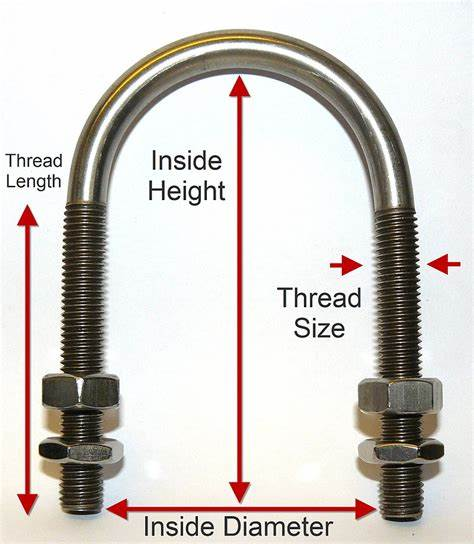
How to Measure a U Bolt
Measuring a U Bolt correctly ensures it fits your application perfectly. Start by identifying the key dimensions. First, measure the inside width, which is the distance between the two legs of the U Bolt. Next, determine the inside length by measuring from the base of the curve to the end of the legs. Finally, check the thread length on each leg. This measurement tells you how much of the bolt can be secured with nuts.
You should also note the diameter of the bolt. Use a caliper or ruler to measure the thickness of one leg. These dimensions are crucial when selecting a U Bolt for your project.
Tip: Always double-check your measurements to avoid compatibility issues during installation.
Installation Steps
Installing a U Bolt is straightforward if you follow these steps:
1. Position the U Bolt around the object you want to secure, such as a pipe or beam.
2. Slide the legs through the pre-drilled holes in the mounting surface.
3. Place washers over the threaded ends to distribute the load evenly.
4. Thread the nuts onto the ends and tighten them using a wrench. Ensure the nuts are evenly tightened to prevent misalignment.
Note: Avoid overtightening, as this can damage the bolt or the object being secured.
Mistakes to Avoid
Avoid common mistakes to ensure a successful installation. Never use a U Bolt that doesn’t match the size of your application. Incorrect dimensions can lead to instability. Don’t skip using washers, as they help distribute pressure and prevent damage. Finally, avoid uneven tightening, which can cause misalignment or stress on the bolt.
Reminder: Regularly inspect installed U Bolts for signs of wear or corrosion to maintain safety and performance.
Selecting the Right U Bolt
Key Factors to Consider
Choosing the right U Bolt involves evaluating several important factors. Start by identifying the size and shape of the object you need to secure. Measure the diameter, width, and length of the bolt to ensure it fits properly. Next, consider the material. For outdoor or marine environments, stainless steel or galvanized steel works best due to their resistance to corrosion. For indoor or less demanding applications, standard steel may suffice.
You should also assess the load requirements. A U Bolt must handle the weight and pressure of the object without bending or breaking. Check the manufacturer’s specifications to confirm the bolt’s load capacity. Finally, think about the environment. If the bolt will face extreme temperatures or chemicals, choose a material designed to withstand those conditions.
Tip: Always double-check your measurements and material choice before purchasing to avoid costly mistakes.
Industry Standards and Certifications
When selecting a U Bolt, look for products that meet industry standards. These standards ensure the bolt’s quality, strength, and safety. For example, ASTM (American Society for Testing and Materials) certifications indicate that the bolt has undergone rigorous testing. ISO (International Organization for Standardization) certifications also guarantee global compliance.
Using certified bolts reduces the risk of failure and ensures long-term reliability. You can find this information on the product packaging or the manufacturer’s website.
Compatibility Tips
To ensure compatibility, match the U Bolt’s dimensions with the object and mounting surface. Use bolts with the correct thread size to pair them with compatible nuts. For pipes or cylindrical objects, choose round U Bolts. For flat surfaces, square U Bolts work better.
Inspect the mounting surface for pre-drilled holes. If they don’t align with the bolt’s legs, you may need to drill new ones. Always use washers to distribute pressure evenly and prevent damage.
Reminder: Regularly inspect installed U Bolts for wear or corrosion to maintain safety and performance.
A U Bolt is a versatile fastening tool with a unique design that secures objects like pipes and beams. Its applications span industries such as construction, automotive, and marine. You benefit from its strength, durability, and cost-effectiveness. Use the tips provided to select and install the right U Bolt for your project.
FAQ
What is the best material for U Bolts in marine environments?
Stainless steel works best for marine environments. It resists corrosion caused by saltwater, ensuring long-lasting performance and safety for your applications.
Tip: Always choose corrosion-resistant materials for outdoor or marine use.
How do you prevent a U Bolt from loosening over time?
Use lock washers or thread-locking compounds. These tools help secure the nuts in place, reducing the risk of loosening due to vibrations or movement.
Can you reuse a U Bolt after removing it?
Reusing a U Bolt is not recommended. Over time, stress and wear can weaken the bolt, reducing its strength and reliability for future applications.
Reminder: Always inspect bolts for damage before considering reuse.


